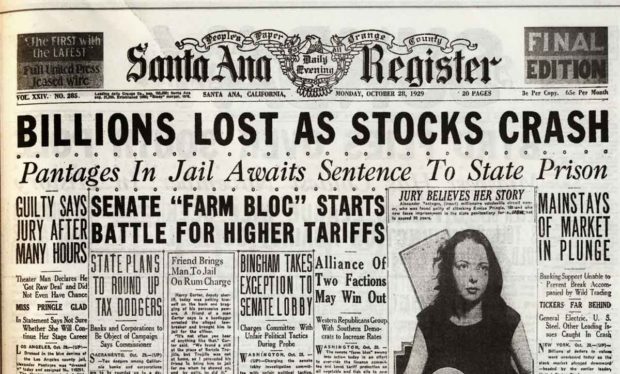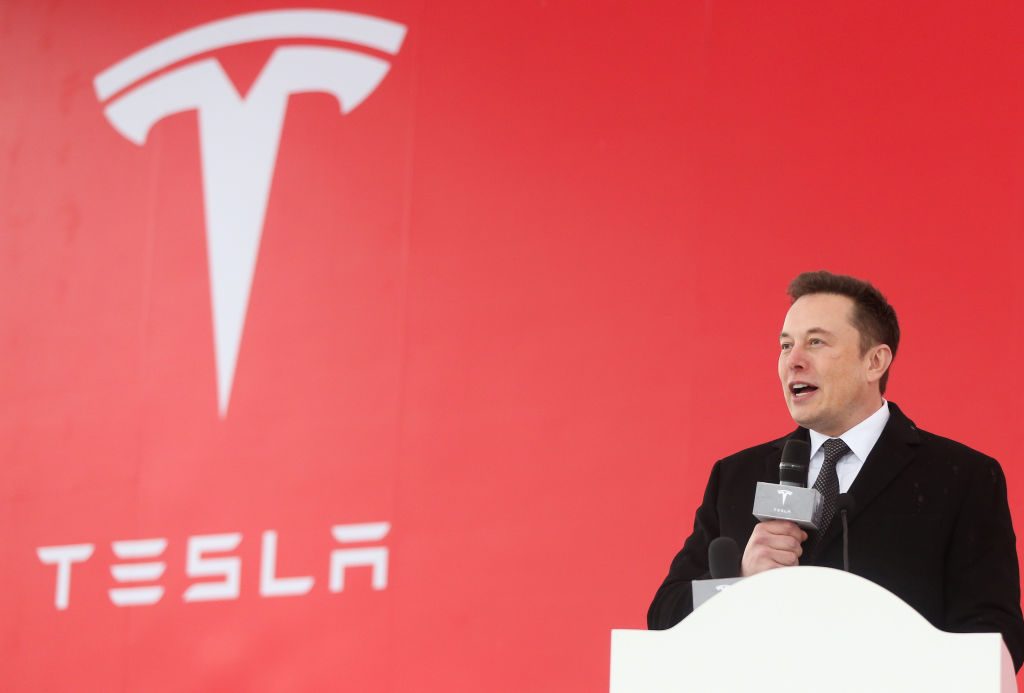Galbraith’s seminal work “The Great Crash 1929” is prescient for investors braving the market turmoil in 2019 not only because of its articulate presentation of complex economic interactions – a rarity by any stretch – but also the parallels between then and now.
He believed people needed constant nudges to temper poor choices in what he termed a “mass escape from reality”. Or else, we’d all fall into the same honeypot without learning any lessons.
Instead of passing the buck to government regulators, Galbraith saw memory a better check and balance to insanity than any law.
Individuals buy into the illusion that good times will keep on rolling
A perverse cognitive bias lulls them into a false sense of security. After all, normalcy dictated that no disaster happened, despite the doomsayers – they’re just bitter they didn’t return 50 per cent on tech stocks this last year. Clearly, they want to spoil our fun with a sell off so they can enter at more reasonable valuations. If no disaster happened then, it never will. This line of inductive reasoning can make coping with catastrophe hard. Normalcy bias breaking down before one’s eyes can lead to inability to process and react accordingly. Notably, people tend to interpret warnings in the most optimistic way possible, seizing any ambiguity to infer a less serious situation.

There is no justification for induction without using induction in the first place. In other words, any argument for induction would be based on the fallacy of begging the question. So then, we could say that induction is the fallacy that has taken place in his reasoning.
Of course then, rising
markets are the natural state of nature. And, falling markets are manipulation.
Galbraith doesn’t lay the blame for the Roaring 20’s reckless disregard for temperance with politicians to check in with stockbrokers. Instead, it was the inevitable product of individuals in their thousands making poor choices. A result of aggregated free will of the masses marred by illusions of get rich quick with minimal effort in a booming economy of low unemployment, rising wages and corporate earnings leading to ignoring the immense risks involved.
Florida’s mid-20’s real estate boom was fuelled by low-margin, down-payments, some as low as 10 per cent. Wind forward to the early 2000’s and the advent of No-Income-No-Job-No Assets (NINJA) loans led to the modern day equivalent real estate bubble. It was only a matter of time before the train derailed.
The hurricane season of 1926 showed these inductive fallacies proved false. Two struck Florida, destroying homes by the thousand and wiping out the speculator market overnight.
Amid such devastation, such was the optimism bias, the public were convinced beyond rhyme or reason “God intended the American middle class to be rich”.
1927, and the Federal Reserve fuels the flames
A stock market at unjustifiably high multiples of earnings, adjusted or otherwise. Expansionary monetary policy by the Fed cut interest rates and bought swathes of US Treasury bonds.
Excess liquidity found its way into the stock market, typically via credit loans to purchase stocks on margin.
Galbraith described this mania as a “mass escape into make-believe started in earnest”. The industrial corporations began drawing on their cash reserves to play the markets, and when those surpluses ran short, they simply issued new shares to continue their foray into stocks. All of this came at the opportunity cost of not investing in new production. Walter Bagehot noted that “people are most credulous when they are most happy”. The delirium of gains fed mass hysteria, leading to a speculative bubble. As with all bubbles, they are fragile by their nature. It was only a matter of time.
By September 1929, buyers were simply no longer convinced they could sell on for a profit. The volume of buyers dried up and momentum with it. Brokers called in margin payments and speculators were forced to sell to repay their loans. Confidence dissipated, with panic finally setting in October as “blind, reckless fear” drove the market to mad scrambles to sell.
It is a feature of the capitalist economic system that periods of economic growth end in speculative booms that proceed to confidence evaporating, fleeing the assets that cheap money and margin lending skyrocketed in its build up.
Galbraith pleaded with his readers to take stock – literally and metaphorically – where rising prices beget higher prices, without any bearing to the underlying fundamentals to justify such prices. One only need cast their memory back to some past instance where illusion replaced reality, and everybody got screwed. The crypto bubble in early 2018 is one such instance of grand mania blinding everybody to the reality of what they were involved with. More recently, the fourth quarter equities sell-off led to irrationally timed selling out at the base of the market and buying back in at the top when sentiment rallied.
Timing the market is notoriously difficult. It is generally time in the market as the variable that determines long-term returns. This metric and pound-cost averaging your purchases to smooth out the troughs and peaks.
Few can do a superior job of predicting macro-future trends of economies, markets, currencies and interest rates. Smaller arbitrage is possible with deep-level research into micro industries, companies and securities the market hasn’t appropriately valued because of sentiment and the allure of story stocks and safe havens.
What Galbraith was urging on the side of caution towards was paying attention to the two variables that will determine future security prices given long enough: fundamentals and valuation. You can boil fundamentals down to what the company will earn in future. Earnings are what stock markets really consider, and most other aspects can be reviewed in relation to influencing earnings. Earnings per share (EPS = total earnings/number of shares) is the most reliable determinant of stock valuations.
The trouble with current valuations in America is they are out of kilter with long-term trends. This would be fine if the companies were generating high income streams to justify their expenditures, of note, technology stocks. And some analysts have said you can’t gauge these new stocks and emerging technologies against old school financial metrics like EPS. History has showed this to be a flawed sentiment thus far.
“Valuation” is the consensus between investors of current and expected future fundamentals. Stocks tend to use price to company’s earnings per share (P/E Ratio). Multiplying future EPS estimate by projected P/E Ratio gives the projected future price.
For any given level of EPS, a variety of P/E Ratios may be assigned by investors, and a variety of stock price outcomes can materialise. All else being equal, higher investors’ opinion of a company, the higher the P/E Ratio assigned by the market to its stock. This is likely to produce positive surprises and its earnings growth can be depended on. Product sex appeal, the stock’s founders and story and its management figureheads feature prominently in these valuations. Think Apple’s Steve Jobs or Tesla’s Elon Musk.

To ignore valuations is at your own peril as an investor
In other words, the price of a company’s stock will be a function of what it does (earnings) and how investors react to what it does (valuation). Valuation will be determined by numerical norms and psychological adjustments. And all of the above will be influenced by the macro environment – what’s going on in the world and how investors feel about that. It’s hard to know all the above, and hard to know it better than others. That’s why I’m guarded about the relevance of “how can you predict?”
If Galbraith were around today, he would probably be advocating caution on the fundamentals/valuation side with the American stock market at precipitous highs after a decade bull run, unemployment back down at 3.9 per cent, and weakening corporate earnings outlooks. Especially considering the rest of world is on par or undervalued against their long-term returns, and large players like Chinese stocks are still reeling from the Trump trade war fallout and European markets with the Brexit conundrum. Having said this, ignoring the American market generally comes at the disappointment of missed returns. So perhaps, a rebalancing of portfolios with some dollar and/or gold hedging to re-enter stocks after the next correction and larger positions in low P/E Ratio, yet growing marketplaces.


